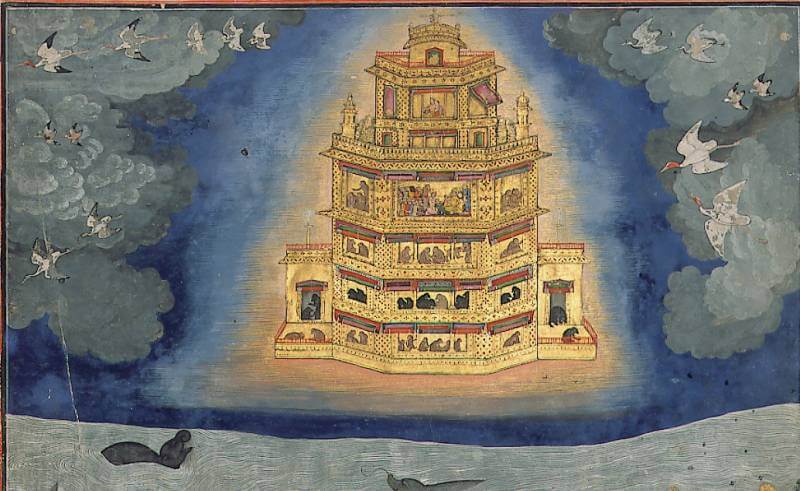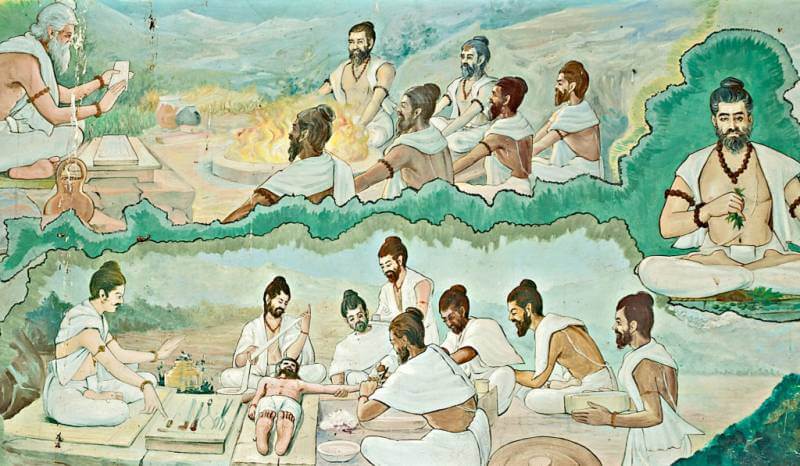
India: Top Technology in the Vedas
 13. 03. 2020
13. 03. 2020

The Vedas are ancient Indian texts, which were written many centuries before our time. But they contain knowledge that the level of science has only recently reached, or has not even mattered. What can we learn from the Vedas that came to us from ancient times?
Immediately after the creation of the universe
The word veda is translated from Sanskrit as knowledge, "wisdom" (compare with Czech "knowledge" - to know, to know). The Vedas are considered to be one of the oldest ancient texts in the world and are the oldest cultural treasure of our planet.
Indian researchers believe that they were created about 6000 BC, European science dates back to later. The idea that the Vedas are eternal is ingrained in Hinduism, they appeared immediately after the creation of the universe, and they were dictated directly to the people by the gods.
The sciences describe many areas of science, for example, medicine deals with Ayurveda, the weapons of the astronaut, the architect of the Sthambri, etc. There are still so-called Vedas, auxiliary fields, including phonetics, metrics, grammar, etymology and astronomy.
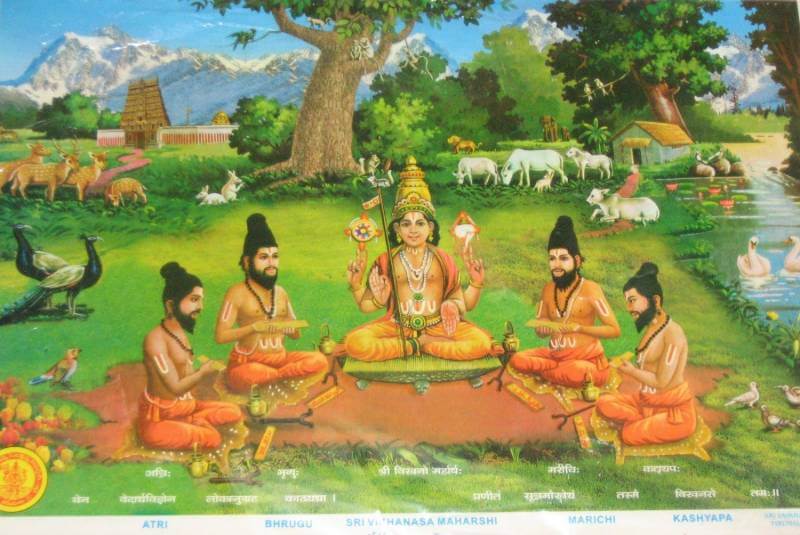 The Vedas tell a great deal about a great deal, and researchers from all over the world still find in them various unexpected knowledge, due to the time of their creation, about the organization of the world and about man.
The Vedas tell a great deal about a great deal, and researchers from all over the world still find in them various unexpected knowledge, due to the time of their creation, about the organization of the world and about man.
Great mathematicians
Interestingly, the secret knowledge of the Vedas fascinated even Soviet scientists to whom mysticism of any kind was completely foreign. A well-known Indologian, academician Grigory Maximovich Bongard-Levin, co-published with Grigory Fyodorovich Ilyin in 1985 the book "India in Antiquity," which dealt with a number of remarkable facts about science in the sciences, such as algebra and astronomy.
In particular, the role of mathematics (ganita) and many other disciplines are highly valued in the Jojti-vedanza: "like a comb on a peacock's head, like a gem, adorning a snake, so ganita is at the top of the sciences known from the Vedangs."
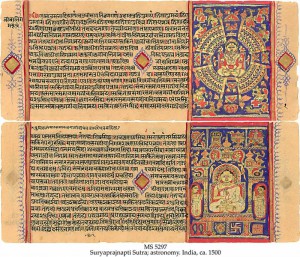 The algebra in the Vedas is also "avjakta ganita"(" The art of calculation with unknown quantities "), and the geometric method of transforming a square into a rectangle with a given side. The arithmetic and geometric series in question are also described, for example in Panchavimsa and Satapatha Brahmanas. Interestingly, that the famous Pythagorean theorem was already known in the ancient Vedas.
The algebra in the Vedas is also "avjakta ganita"(" The art of calculation with unknown quantities "), and the geometric method of transforming a square into a rectangle with a given side. The arithmetic and geometric series in question are also described, for example in Panchavimsa and Satapatha Brahmanas. Interestingly, that the famous Pythagorean theorem was already known in the ancient Vedas.
And contemporary scientists claim that the Vedas also contain information about infinity, calculations in the binary system, and the storage of information (the placement of data in specified places to allow rapid access to it), which is used in search algorithms.
Astronomers from the shores of the Ganges
The level of astronomical knowledge of the ancient Indians can be judged by the many references in the Vedas. For example, religious ceremonies were associated with the phases of the Moon and its position on the ecliptic.
The ancient Indians of Vedic times knew, apart from the Sun and the Moon, all five planets visible to the naked eye. They were able to orient themselves in the starry sky and connected the stars into constellations. Their complete lists are given in Black Yajurveda and Atharvaveda, the names have remained virtually unchanged for many centuries. The ancient Indian nakshatra system corresponds to what is stated in all current stellar catalogs.
In addition, the speed of light was calculated with maximum accuracy in Rgveda. Here is a text from Rgveda: "With deep reverence, I bow before the sun, which exceeds the distance of 2002 yojanas in half nimes."
Jojana is a measure of length and not time. When we convert the yojanas and nimes to the current system of units and recalculate, we get a speed of light of 300 km / s.
Knowledge of the universe
The Vedas even talk about spaceflight and various flying machines (vimnas) that have successfully overcome Earth's gravity. In Rgveda, for example, it is said of a miraculous chariot: "born without horses and without a bridle, worthy of praise, a three-wheeled chariot travels through space." "It moved faster than thought, like a bird in the sky, rising to the sun and moon and falling to Earth with a loud roar."
If we can trust the ancient texts, the car was controlled by three pilots and could land both on land and water. The Vedas also give a technical description of the chariot: it was made of several kinds of metal, and liquids called madhu, rasa, and anna were used. An Indian Sanskrit scientist, Kumar Kanjilal, author of "Vimans in Ancient India," claims that the race was mercury, madhu alcohol, made from honey or fruit juice, and anna alcohol from rice or vegetable oil.
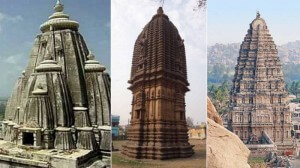 It is worthwhile mentioning the ancient manuscript "Samarangana Sutradhara," which also writes about a mysterious mercury-flying car:
It is worthwhile mentioning the ancient manuscript "Samarangana Sutradhara," which also writes about a mysterious mercury-flying car:
"Its body, made of light material and similar to a large flying bird, must be strong and strong. It is necessary to place a device containing mercury inside and an iron heating device under it. With the help of the force that lurks in the mercury and sets in motion the wind, one can fly long distances in the sky in this car in a wonderful way… The car creates the power of thunder thanks to the mercury. And soon it turns into a pearl in the sky".
If we believe the Vedas, the chariots of the gods had different dimensions, including huge ones. The flight of the huge chariot is described as follows: “Houses and trees trembled and small plants were uprooted with a terrifying wind, there was a rumble in the caves in the mountains, and the sky seemed to split or collapse — from that enormous speed and loud thunder flying car… "
Top-level medicine
But the Vedas are not just about the universe, there is a lot about man, his health and biology in general. For example, Garbha Upanishad tells of the life of the fetus in the womb:
"The embryo, which is in the womb day and night, is a kind of mixture (slurry) of elements. After seven days it becomes similar to a bubble, after two weeks it is a tuft that thickens in four weeks. In two months the area of the head begins to develop, in three legs, after four months the abdomen and buttocks, in five the spine, in six months the nose, eyes and ears. At the age of seven months, the functions of life begin to develop, and at the age of eight, the little man is almost done. ”
It should be noted here that European science did not reach such a level of embryology until many centuries later. For example, the Dutch physician Reinier de Graaf did not discover ovarian follicles until 1672. The Garbha Upanishad also describes the structure of the heart: "There are 101 vessels in the heart, each with another 100 vessels, each with 72 branches." .
Ancient books contain far more remarkable knowledge. The combination of male and female germ cells to form a zygote was discovered in the 20th century, but they are already mentioned in the Vedas, specifically in the Bhagavata Purana. It also describes the structure of the cell and also microorganisms, whose existence was discovered by modern science in the 18th century.
There is a text in Rgveda that addresses the Ashvinas and discusses the field of prosthetics and the achievements of ancient medicine in general.
And you have done it, O many benefits,
that the bitter singer started to see again.
Because the foot was cut off like a bird's wing,
you have secured Vishpal's iron leg so that he can ride for the intended goal.
And here we are talking about, our medicine not yet available, the overall rejuvenation of the organism:
… You took the old body cover from Chavana like a robe,
have prolonged the length of life that has been abandoned by all, O you admirable.
And even then he became the husband of young women. There is another interesting moment. The sciences have been translated in past centuries, and with knowledge of the then level of science and technology. It is not excluded that new translations of ancient texts could reveal completely new knowledge that contemporary science does not yet have.





 1
1